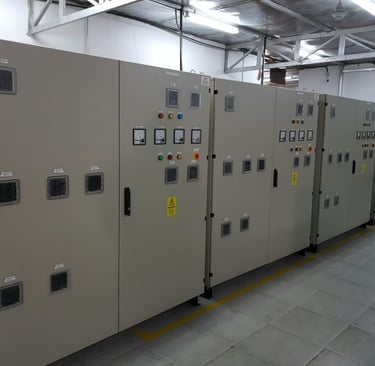Understanding Switchgear Assembly: A Vital Component in Electrical Systems
Dive into the heart of electrical systems with this on switchgear assembly. Learn about its components, types, and why it's essential for ensuring safety and reliability in power distribution.


Ever wonder how electricity gets safely and efficiently distributed in buildings and facilities? A key player behind the scenes is the unsung hero - the switchgear assembly.
At its core, a switchgear assembly is essentially a centralized hub for electrical control. It houses an array of components that work together to manage, protect, and isolate electrical equipment within a power system.
Components of Switchgear Assembly
Circuit Breakers: These are crucial components that interrupt the flow of current in case of overload, short circuit, or any other fault condition. They are designed to automatically trip when such anomalies occur, preventing damage to the electrical system and ensuring safety.
Disconnect Switches: These switches provide a means for isolating equipment for maintenance or repair purposes. They allow operators to physically disconnect a portion of the electrical system from the power source, ensuring that work can be performed safely.
Protective Relays: These devices monitor electrical parameters such as voltage, current, and frequency. When they detect abnormalities indicating a fault, they send signals to circuit breakers to trip and isolate the affected part of the system.
Fuses: Fuses are overcurrent protection devices that contain a metal wire that melts when excess current flows through it. This action interrupts the circuit, protecting equipment downstream from damage.
Busbars: Busbars are conductive bars or strips that serve as a common connection point for multiple circuit breakers and other devices within the switchgear assembly. They efficiently distribute electrical power to various parts of the system.
Types of Switchgear Assembly
Low Voltage (LV) Switchgear: LV switchgear is designed for operating voltages up to 1000 volts AC or 1500 volts DC. It's commonly used in residential, commercial, and industrial applications for distributing power within buildings or facilities.
Medium Voltage (MV) Switchgear: MV switchgear is designed for operating voltages ranging from 1000 volts to 33,000 volts AC. It's typically used in industrial plants, substations, and distribution networks for controlling and protecting medium voltage circuits.
High Voltage (HV) Switchgear: HV switchgear is designed for operating voltages above 33,000 volts AC. It's used in utility substations and power generation facilities for managing high voltage transmission lines and equipment.
The Importance of Switchgear Assembly
Switchgear assembly plays a crucial role in ensuring the reliability, safety, and efficiency of electrical systems. Here's why it's so important:
Safety: By providing protection against overloads, short circuits, and other faults, switchgear assembly prevents electrical accidents and minimizes the risk of fire or electrocution.
Reliability: Switchgear assembly ensures continuous and uninterrupted supply of electricity by isolating faulty sections of the system and allowing unaffected parts to remain operational.
Control: It enables operators to control the flow of electricity within the system, facilitating proper functioning of electrical equipment and machinery.
Maintenance: Switchgear assembly allows for easy isolation of equipment for maintenance or repair, minimizing downtime and maximizing productivity.
Flexibility: Modern switchgear assemblies are designed to be modular and scalable, allowing for easy expansion or modification of electrical systems as per changing requirements.
In conclusion, switchgear assembly is an indispensable component of electrical infrastructure, serving as the backbone of power distribution systems. Its ability to control, protect, and isolate electrical equipment ensures the reliability and safety of electrical systems across various applications and industries. As technology advances, switchgear assemblies continue to evolve, incorporating innovations to meet the ever-changing demands of the electrical industry.
